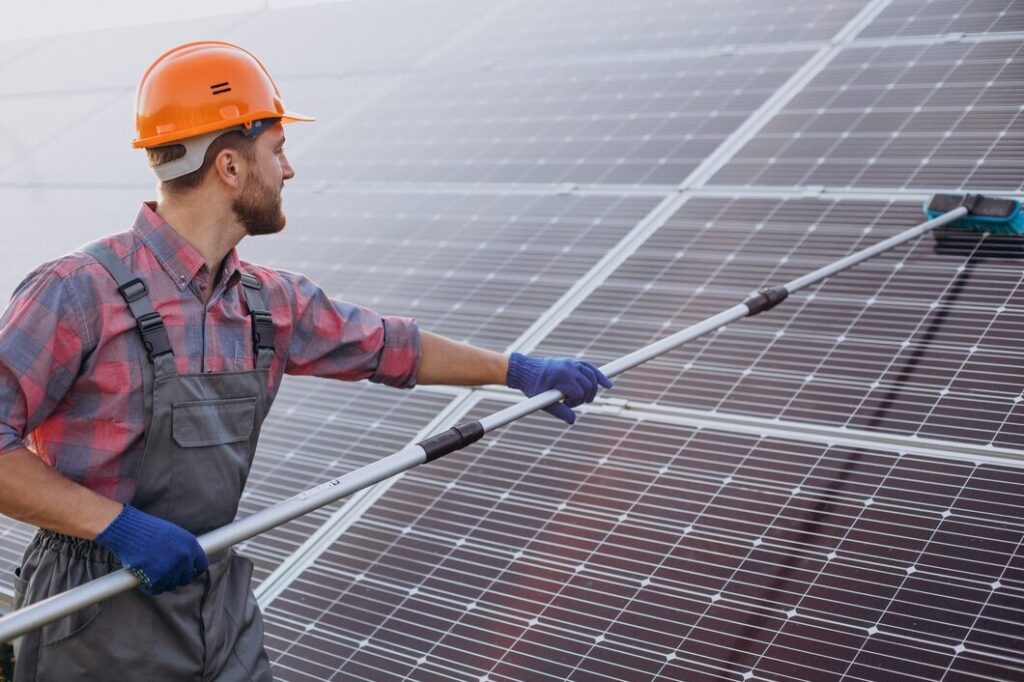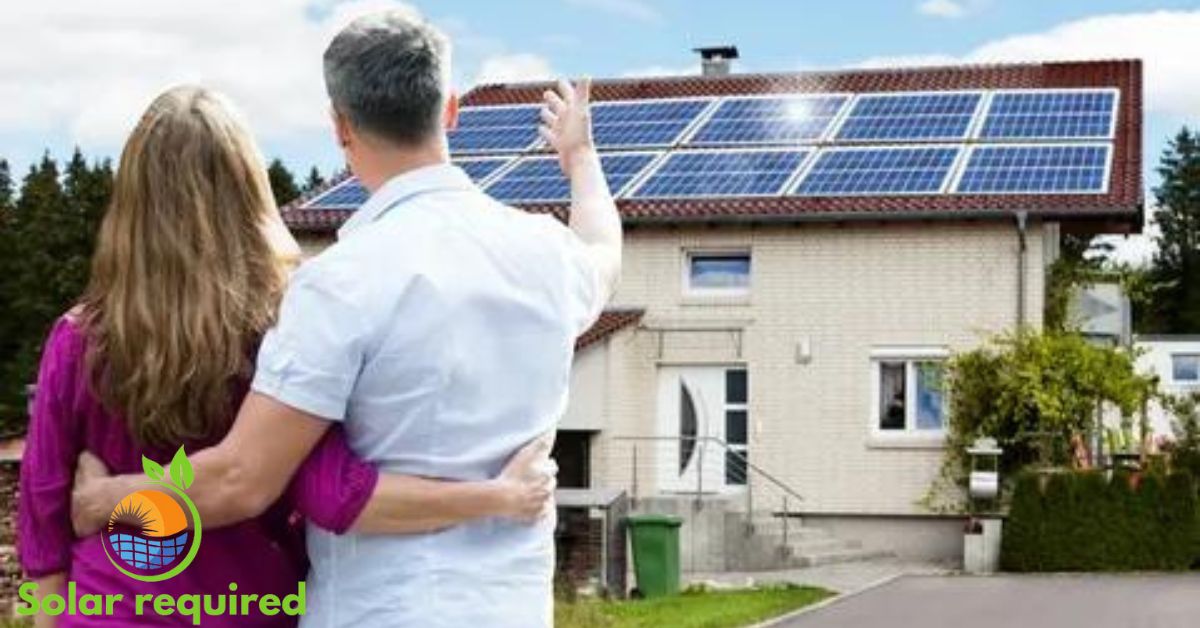Solar panels are popular in off-grid locations. People want energy independence and sustainable living. These systems provide reliable power. They do so in remote areas. In these places, traditional electricity infrastructure is unavailable or unreliable. They offer freedom from grid constraints. They also reduce carbon footprints. This makes them attractive to eco-conscious people and communities.
This article aims to provide expert tips. They are for using solar panels in off-grid places. It will cover choosing the right solar panel system. It will also cover maximizing efficiency in remote settings and critical parts for off-grid setups. The guide will also discuss safety. It will cover the best practices to ensure top performance. By the end, readers will know how to set up and maintain an off-grid solar panel system in harsh environments.
Choosing the Right Solar Panel System for Off-Grid Use
When choosing a solar panel system for off-grid use, consider several factors. They are essential for getting the best performance and efficiency. These include panel types, system voltage, and battery capacity.
Panel Types
The selection of solar panel type transforms the entire system’s efficiency. Monocrystalline panels are highly efficient. They are often recommended for off-grid systems. The panels work well in many conditions. They work in cloudy weather. But rain can impact solar panel performance. This makes them suitable for most places. Budget-conscious individuals may consider polycrystalline or amorphous panels as alternatives.

System Voltage
The system voltage is a crucial factor in determining the efficiency and cost-effectiveness of an off-grid solar setup. Higher voltage systems are generally more efficient and cost-effective for more considerable energy demands. For solar array capacities less than 1000W, a 12V system is suitable. For capacities between 1000W and 2000W, a 24V system is recommended. For systems that exceed 2000W, a 48V system is considered the best option.
Battery Capacity
Battery capacity is essential for storing surplus energy during periods without sunlight. The size of the battery bank depends on several factors:
- Daily energy consumption
- Depth of discharge (DOD)
- Number of days of autonomy
- Temperature conditions
For example, with a daily energy use of 1.9 kWh, three days of autonomy, and a 50% state of charge (SOC), the required battery bank size would be 11.4 kWh.
Maximizing Solar Panel Efficiency in Remote Locations
Optimal Panel Placement
To maximize solar panel efficiency in remote locations, proper placement is crucial. Solar panels should be positioned in areas with total sun exposure, avoiding shade from trees, buildings, or other objects. Install solar panels at an angle equal to the local latitude. This will ensure they get direct sunlight all year.
Regular Cleaning and Maintenance

Maintaining solar panels is essential for optimal performance. While they require minimal upkeep, regular cleaning can significantly impact their efficiency. It is recommended to clean solar panels at least twice a year, regardless of weather conditions or location. This practice helps prevent dirt, dust, and debris buildup that hampers performance. It’s essential to keep panels free of snow and ice in snowy environments during winter. Cleaning can be as simple as using a garden hose or a soft-bristled broom for ground-mounted systems.
Using Solar Trackers
Solar trackers allow panels to follow the sun’s path, potentially increasing energy output. Single-axis trackers that tilt east to west can increase production by 25% to 35%. Dual-axis trackers, which also adjust north to south, can boost energy production by about 40%. However, trackers come with higher costs and maintenance requirements. They are most beneficial in areas with limited space or for large-scale utility installations. For most homes, adding fixed panels is usually cheaper.
By using these strategies, users can significantly improve the efficiency of their off-grid solar panels. This will make a more reliable and productive renewable energy system.
Essential Components for Off-Grid Solar Setups
Charge Controllers
Charge controllers are critical components in off-grid solar installations. They protect battery storage components and ensure efficient and safe operation throughout the system’s lifespan. These devices prevent batteries from overcharging. They do this by limiting the amount and rate of charge. They also prevent battery drainage. They do this by shutting down the system if stored power exceeds 50 percent capacity.
There are two main types of charge controllers: Pulse Width Modulation (PWM) and Maximum Power Point Tracking (MPPT). PWM controllers are more straightforward and cheaper. MPPT controllers are more efficient. They are better at using the full power of solar panels to charge batteries.
When choosing a charge controller, consider the cost, tech lifespan, climate, and Number of solar panels. Also, consider your energy needs and the size, Number, and type of batteries.
Inverters
Inverters are the brain of a solar system. They manage power flow and control two types of power: DC (direct current) and AC (alternating current). Off-grid inverters require a battery bank to function, taking DC power from the batteries and inverting it to AC power for household use.
When choosing an inverter, it’s essential to consider the power requirements of the appliances it will be running. Suitable off-grid inverters are high-quality. They use large, heavy-duty transformers. The transformers handle high surge loads without overheating or tripping. Pure sine wave inverters are used for most applications. They provide better power. It’s better than or better than the power grid.
When selecting an inverter, key factors include efficiency, self-consumption, surge capacity, battery charger output, temperature range, and warranty.
Battery Banks
Battery banks are essential for storing surplus energy during periods without sunlight. The battery bank’s size depends on factors. These factors include daily energy use, DOD, days of autonomy, and temperature.
To calculate the required battery bank size, use the following formula:
Battery bank size (kWh) = Daily energy use (kWh) x Number of days of autonomy / (1 – SOC)
For example, with a daily energy use of 1.9 kWh and three days of autonomy, the required battery bank size would be 11.4 kWh.
When choosing batteries, consider factors such as weight, cycle life, and compatibility with the inverter. LiFePO4 batteries are becoming more popular. This is due to their longer cycle life and higher energy density than lead-acid batteries.
Safety Considerations and Best Practices
Proper Wiring and Installation
Proper wiring and installation are crucial for the safety and efficiency of off-grid solar systems. These systems use alternating (AC) and direct (DC) voltages. They can be lethal if safety precautions are not followed. It is essential to handle all wires as if they are live and consider hiring a qualified electrician if uncomfortable with any aspect of the installation.

Grounding is a critical component of safe installation. The ground rod(s) at the pole mount need to be connected to both the combiner box ground bar and the copper ground rod for the house. This link ensures no two isolated grounding systems are connected to the same electrical system. This prevents potential safety hazards.
Surge Protection
Surge protection is an integral component of solar panel array installations that cannot be ignored. Solar panels, like other electrical devices, are prone to sudden voltage increases that can damage their internal components. Lightning poses significant risks to solar farms. It can cause complete or partial destruction. This can happen right away from a direct strike or over time from an indirect one.
A surge protection network should be installed to protect critical circuits. It should cover a solar power system’s DC and AC power distribution. The Number of surge protection devices (SPDs) needed varies depending on the distance between the panels and the inverter. Installing SPDs on DC inputs and AC outputs of a solar PV system’s inverters is recommended while grounding both positive and negative DC lines.
System Monitoring
Remote Monitoring Systems (RMSs) have changed how off-grid solar installations are managed. They have also changed how they are maintained. Systems harness advanced components to grant users remote, real-time data access.

RMSs provide complete insights into the system’s health and past and current performance. They let users make informed decisions about energy management and system optimization. They often include customizable alerts via SMS or email. This helps users quickly address any issues with their off-grid solar systems.
Battery monitors are essential in off-grid solar systems. They offer insights into battery health and performance. The monitors measure parameters. These include voltage, current, state of charge (SOC), state of health (SOH), and battery temperature. Battery monitors provide this information. They help prevent overcharging and deep discharging. These can cause early battery failure.
Conclusion
To wrap up, off-grid solar panel systems offer a game-changing solution for sustainable energy in remote locations. Careful consideration of panel types, system voltage, and battery capacity is crucial to choosing the proper setup. Maximizing efficiency through good placement and upkeep, and using solar trackers, can significantly boost energy production. These components are essential. They include charge controllers, inverters, and battery banks. They are vital for the system’s reliability and effectiveness.
Safety should always be a top priority when dealing with off-grid solar installations. Proper wiring, grounding, and surge protection prevent potential hazards. Implementing a robust monitoring system allows for real-time tracking of performance and quick resolution of any issues. By following these expert tips and best practices, people and communities can use the sun to be energy-independent. They can also cut their environmental impact. This is true even in remote places.
FAQs
1. Is it possible to live entirely off-grid using solar panels?
Living completely off-grid with solar panels is feasible but involves significant challenges, particularly regarding energy storage. It’s practical to power small sections with solar, like a shed or part of a house. However, using only solar to power a whole home is often impractical or cost-ineffective. Typically, about 12 solar batteries are required to achieve full off-grid status.
2. What are the best practices for maximizing the efficiency of solar panels?
When operating significant appliances during daylight hours, it is advisable to use solar panels efficiently. For example, air conditioners should run during the sunniest part of the day while keeping doors and windows closed to keep heat out. Also, use electric heaters and slow cookers during the day. Make sure the house is well-insulated to keep the desired temperature inside.
3. How do you set up an off-grid solar system?
Setting up an off-grid solar system involves several key steps:
- Calculate the total power load.
- Choose the appropriate battery.
- Select suitable solar panels.
- Pick a charge controller.
- Choose an inverter.
- Install the solar panels.
- Connect all components.
- Correctly wire all the components. Follow these steps carefully. Also, consider safety throughout the installation.
4. How can I optimize the performance of my solar panels?
To achieve the best results from solar panels, follow these tips:
- Regularly clean the panels to remove debris and dust.
- Install panels away from shaded areas.
- Position panels to maximize sun exposure.
- Use monitoring tools to check and optimize performance.
- Insulate your home well to reduce energy loss.
- Install solar batteries to store excess energy.
- Stagger the use of different appliances to avoid peak load times.


